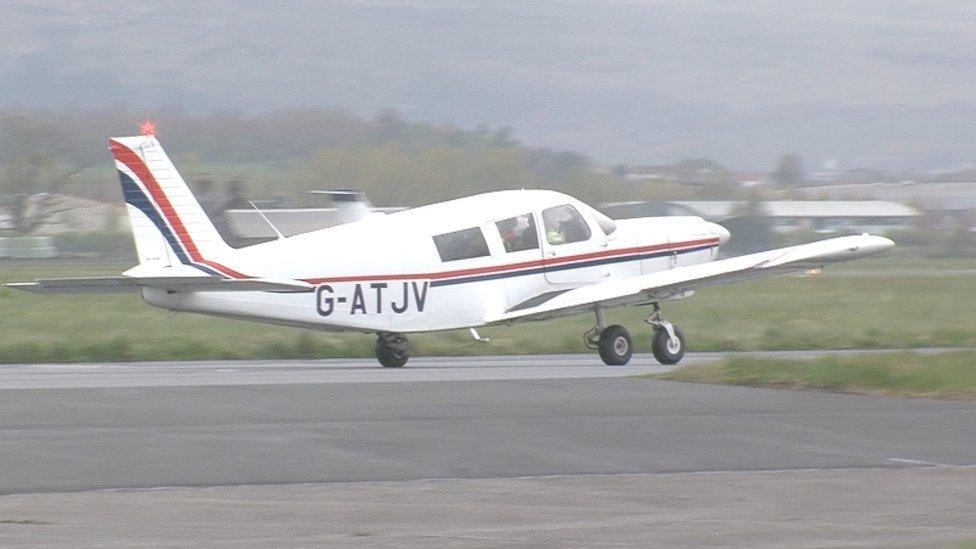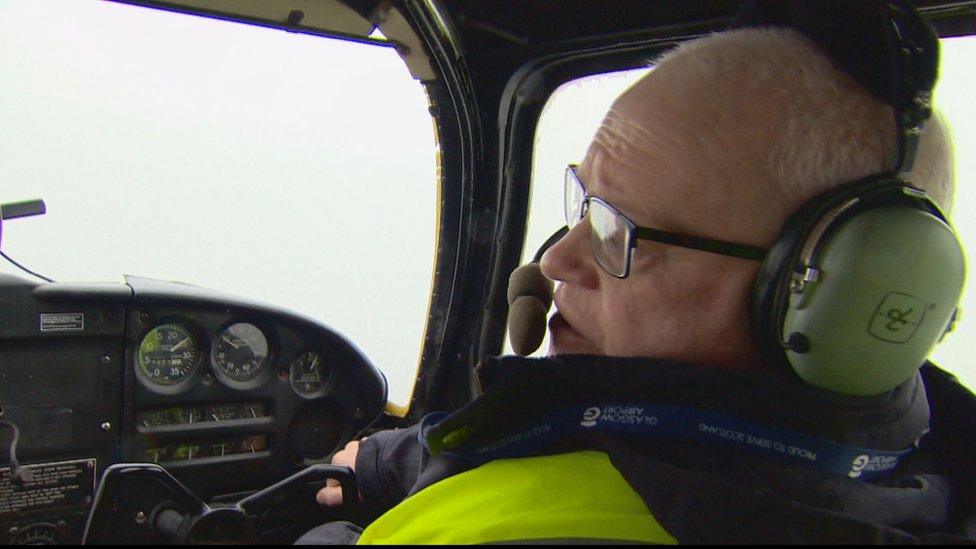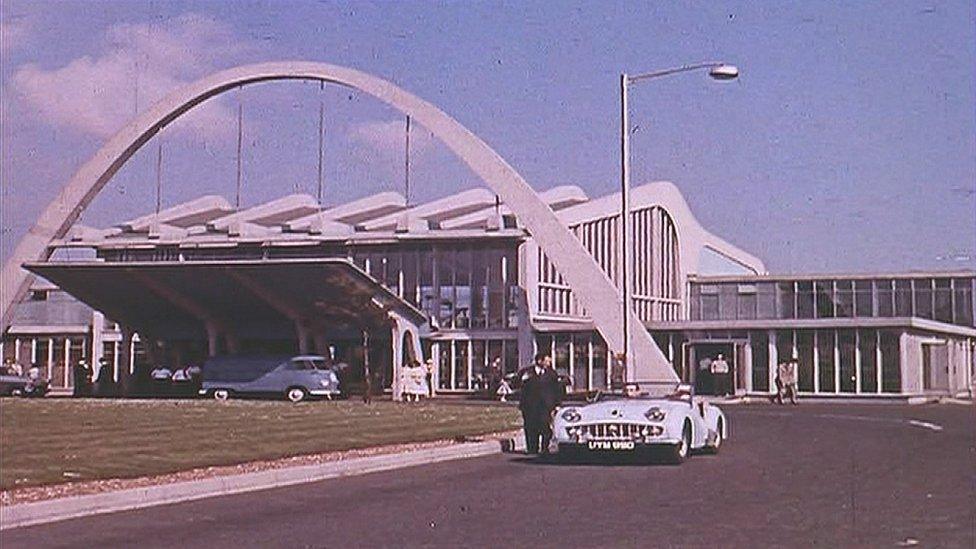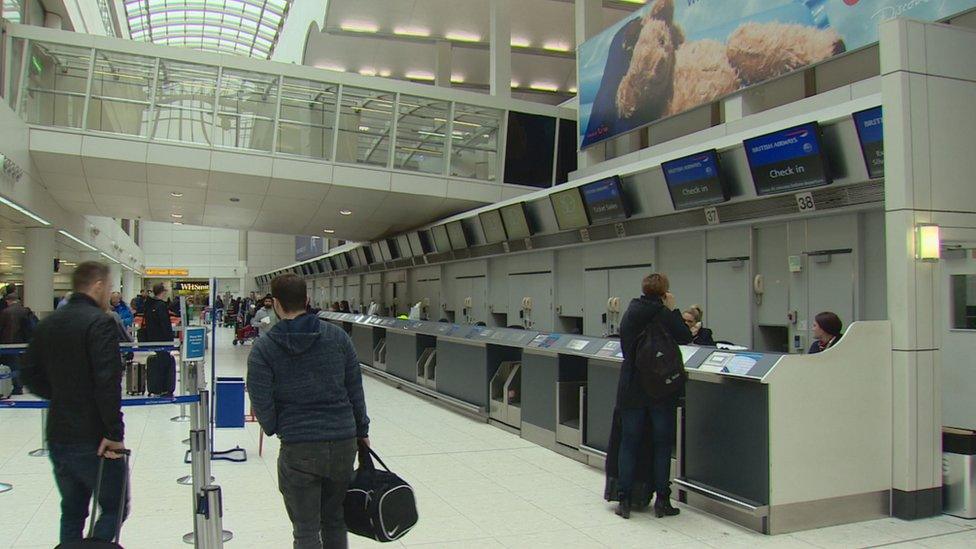Glasgow Airport celebrating 50 years still flying high
- Published
Glasgow Airport first opened 50 years ago
Glasgow Airport now handles more than nine million passengers a year but 50 years ago when it opened, on 2 May 1966, only a handful of airlines operated there.
As commercial flights took off in the 1960s the existing airport at Renfrew, only a couple of miles away, could not cope with increasing traffic.
The former military air base at Abbotsinch was chosen by Glasgow Corporation to be the new airport for the city.
But the first plane to land at Glasgow was no prestige flight.
It was a six-seater Piper Cherokee, flown by Capt Kenneth Foster, then Loganair's chief training pilot.
On 1 May 1966, the day before the airport officially opened, he was piloting an Aviation Ministry inspector checking the approach and runway lighting before the airport could be licensed for use.

Glasgow Airport under construction, May 1964
Capt Foster, who died in April, shortly before the airport celebrates its 50th anniversary, wrote: "We found a few of the approach lights were not accurately aligned and required adjustment by the contractors, as directed by the inspector.
"With the adjustments completed, a ministry car was driven along the runways and taxiways, to ensure they were clear of debris and then we were cleared to land on the pristine runway."

The first plane to land at Glasgow Airport in 1966 prepares to take off
Almost 50 years later I took off the in same aircraft - G-ATJV - to recreate that first flight.
Along for the ride was aviation historian Professor Dugald Cameron, who has written a book about the history of Glasgow Airport.

Prof Dugald Cameron, who has written a history of Glasgow Airport, took part in a commemorative flight
He said the old airport at Renfrew was unable to be expanded at a time when air travel was developing quickly.
He said: "Despite the fact it was doubled in size during the World War Two to cope with the necessities of wartime, it was constrained very much in terms of its size, and could not be developed much more.
"As newer and bigger, and more demanding aircraft came into service, it was clearly too small."

Renfrew Airport's modernist terminal building, designed in 1954 by Sir William Kinnimonth, was bulldozed after the airport closed
After a short flight, curtailed by the unseasonal wintry weather, we landed and taxied to the Loganair hangar.
The airline, along with Icelandair and Aer Lingus have been constant presences at the airport over its 50 years during which there has been an incredible growth in air travel generally.
Former Loganair chairman Scott Grier said: "We've been the resident airline since Day One.
"We moved from Renfrew Aerodrome in 1966. so we've seen it all."
He added: "Until just a few years ago we were in one of the two World War II hangars before they were demolished.
"So progress has been made; significant progress over the years of course."

Glasgow Airport is expecting record passenger numbers this year
Glasgow Airport is such a major feature in Scottish life and the nation's economy that many people do not realise it is only 50 years old.
The chief executive, Amanda McMillan is herself younger than the airport she heads but she said it is continuing to grow.
"It started with just three airlines, and now we have over 30, flying to over 110 destinations," she said.
"The changes have been dramatic. We support more than 7,000 jobs in the economy, and more than £190m GVA (gross value added), so the stats really give a powerful message.
"But I think more in day-to-day life everyone can see just how many people use the airport for leisure, business and visiting friends and family, it has a huge impact on Scotland."
The airport handles around 9m passengers a year, but Ms McMillan said in the 50th anniversary year they expect to see record passenger numbers and there is a trajectory to take that to 10m a year, and beyond.